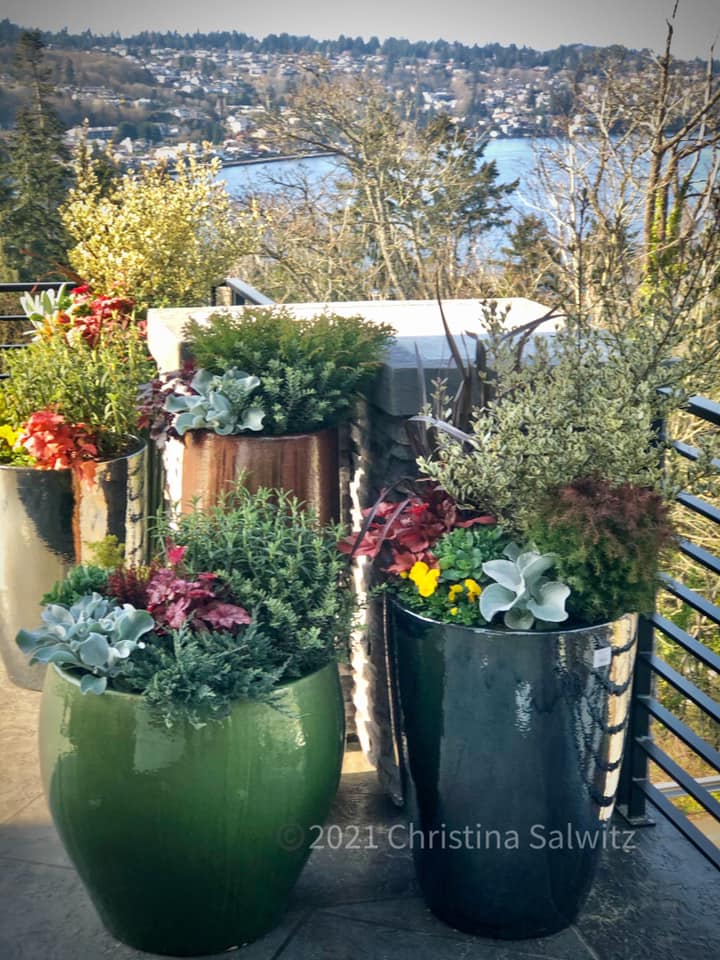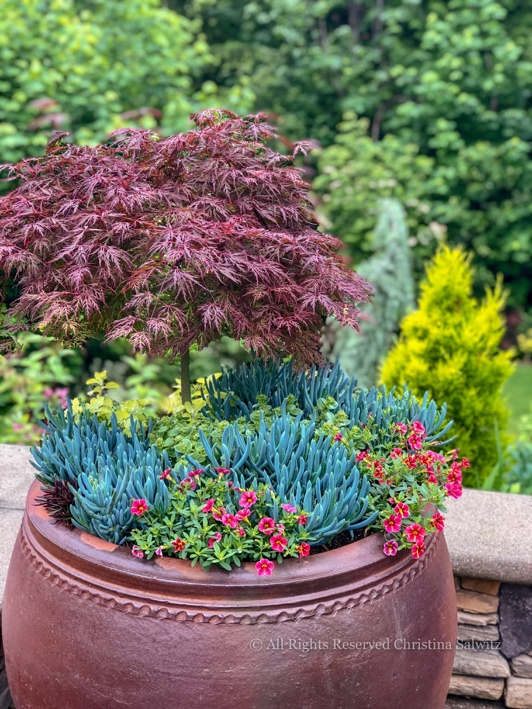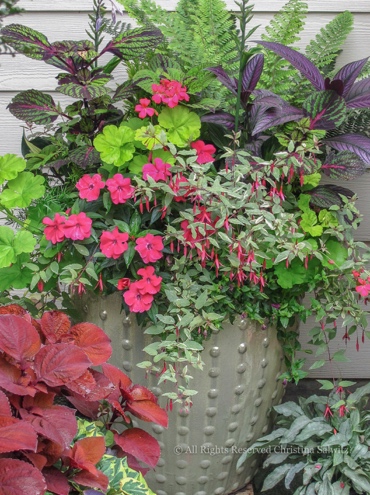
This month you may be bringing along your container plants in the greenhouse or choosing them at nurseries. But not all outdoor locations are ideal for planting in pots, so I’m turning to Christina Salwitz for advice. She’s known as The Personal Garden Coach, as well as a horticulturist, garden designer, photographer, and co-author of Gardening with Foliage First. She creates and maintains containers for clients, so she knows what works in extreme locations—places with blaring sun, or deepest shade, or strong winds.
Plan for Extremes
“In extreme situations, it’s about choosing the right size container for what you want to grow,” Christina tells me. “Often, I find that gardeners try to use far too many small and medium size pots, when a few larger ones are easier to maintain, retain moisture longer, and allow for lower maintenance.” She prefers thick-walled Vietnamese pottery. “It withstands the harshest elements year-round,” she says, “and looks great for many years.”

“Potting soil is the foundation for everything successful that I do other than the actual design,” Christina says. “A good mix has plenty of compost elements, as well as grit and bark.” She avoids mixes with peat and coir because, she says, “They tend to compact too easily for long-term outdoor use.”
And no, she never puts anything (no gravel, broken pots, or empty milk bottles) in the bottom of the containers to lighten them or to use less mix. Christina prefers, “All potting soil all the way down. The roots need a place to go.” The exception? “If I’m working with a tall narrow pot that needs bottom weight to keep it from blowing over. Then I’ll add a small handful of large river rock or concrete blocks.”
Care for Containers Consistently
Christina says, “The quality of your potting soil also effects your watering strategy. If your soil holds moisture well, then it makes watering much easier.” But if a soil mix has too much peat and it dries out, Christina observes, “it will lock up like concrete and not allow water to penetrate easily. This is the sad demise of many a hanging basket.”

Here’s Christina’s best watering hack. “Water gently and lightly,” she says, “Then walk away for ten minutes, come back and water deeply. This breaks the surface tension of the soil and allows water to penetrate thoroughly.”
Quality soil also contributes to plant nourishment. Christina says, “I use very nutrient heavy potting soil, so the soil does a ton of the work for me, but at planting time, I use a granular organic fertilizer in fairly generous quantities for seasonal containers.” For long-term plants in containers, she adds a yearly light fertilizing on the surface.
Design for Success
Christina’s basic design guidelines follow her maxim: “Three heights, three textures, three colors.” She prefers to allow the plants and the shape of the container to dictate the design. She notes, “You are not required to have a single centerpiece plant smack in the middle of the pot with everyone dancing around it like a May pole.”

And another tip? Christina says, “If you begin your design based on a flower, you will almost always be disappointed. If you base your design on the foliage and the textures first, then add the flowers like the sprinkles on a yummy cake, you will never go wrong.”
Plant for Extremes
- Hot Sun – “Plants with silver, gray, blue, or fuzzy foliage often tell you they are tough and drought tolerant,” Christina says. – Rosemary, lavender, succulents, and grasses
- Deep Shade – “The larger the leaf, the more shade it tolerates,” Christina notes. “Each leaf has more surface area to process less light, so GO BIG!” – Acanthus, hosta, cast iron plant (Aspidistra elatior)
- High Winds – “Aim for leaves where wind can pass through easily, think palm trees,” Christina says, “or any foliage with smaller leaves such as those in the hot location containers.” – New Zealand flax (Phormium), fine-textured grasses, succulents


